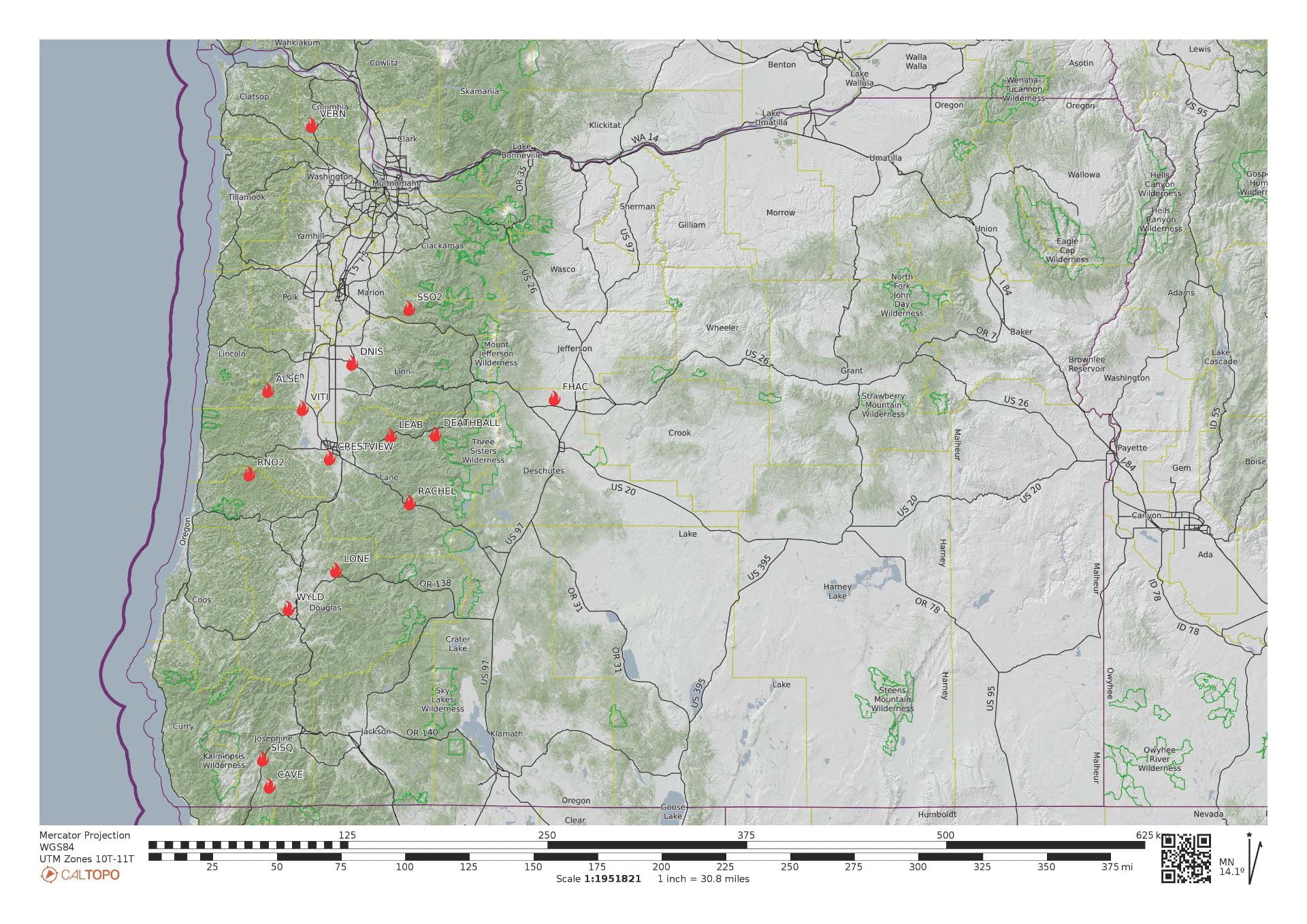Wildfire Smoke Sensors
Developing a Cutting-Edge Wildfire Management PlatformIn 2023, the Oregon Hazards Lab partnered with the Department of Homeland Security to deploy wildfire smoke sensors that detect emerging fires through changes in air quality. These innovative new tools were developed by Breeze Technologies and N5 Sensors through the Department of Homeland Security’s Smart Cities Internet of Things Innovation (SCITI) Labs initiative.

We installed 30 smoke sensors across western Oregon so they could be field-tested alongside other wildfire detection technologies. The data they produced were monitored and analyzed by Breeze Technologies and N5 Sensors, who compared them to alerts generated by wildfire detection cameras. This research will help to determine if the sensors could effectively detect and track wildfires and deliver geographically targeted alerts. Eventually, this will improve the sensors’ detection capabilities and optimize locations of future deployments. This project concluded in 2024.
Wildfire Smoke Sensor Locations

Sensors were deployed at fifteen locations across Oregon before being removed in the summer of 2024. Each site had one smoke sensor from Breeze Technologies and one from N5 Sensors. Most sensors were co-located with seismic monitoring sites or wildfire detection cameras that are maintained by the Oregon Hazards Lab:
- Benton County: ALSE seismic site
- Columbia County: VERN seismic site
- Deschutes County: FHAC seismic site
- Douglas County: LONE, RNO2, and WYLD seismic sites
- Lane County: Crestview and Deathball camera sites, VITI and LEAB seismic sites, and RACHEL residence
- Linn County: DNIS seismic site
- Marion County: SSO2 seismic site
- Josephine County: CAVE seismic-camera site and SISQ seismic site
Learning More About Smoke Sensor Technology

Wildfire smoke sensors are designed to “smell” the chemical components of wildfire smoke. These volatile organic compounds and gases include carbon dioxide, nitrous oxide, sulfur dioxide, and particulate matter. Upon detecting a new fire start, sensors would sent an email or text-notification to pre-programmed contacts. Because smoke sensors do not rely on visual surveillance, they can operate on poor-visibility conditions such as rainstorms and wildfire smoke events. However, they require a dense sensor network to operate accurately and reduce high rates of false alarms.
